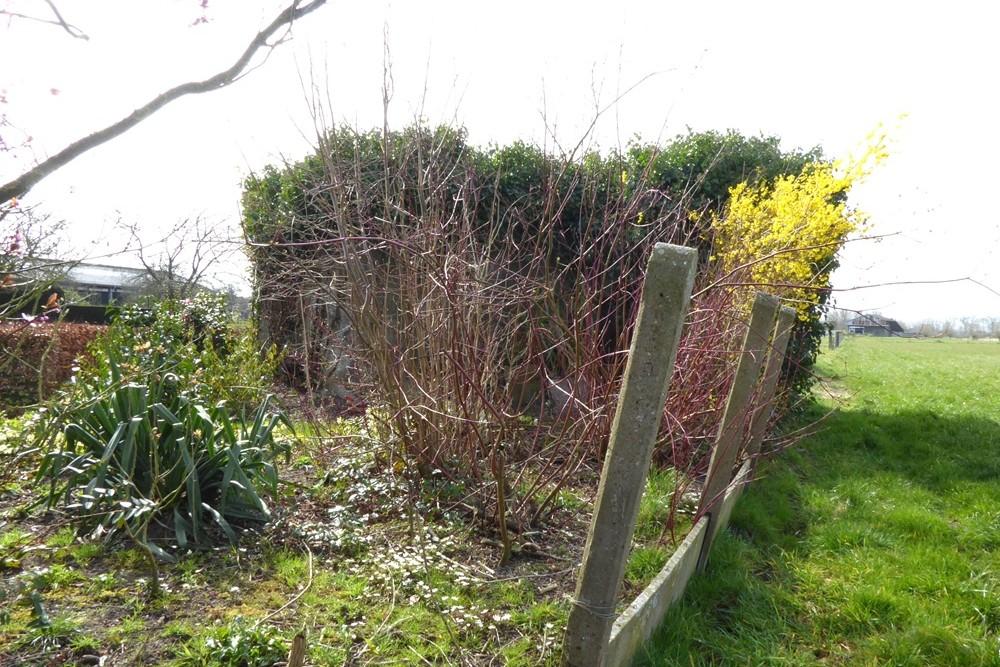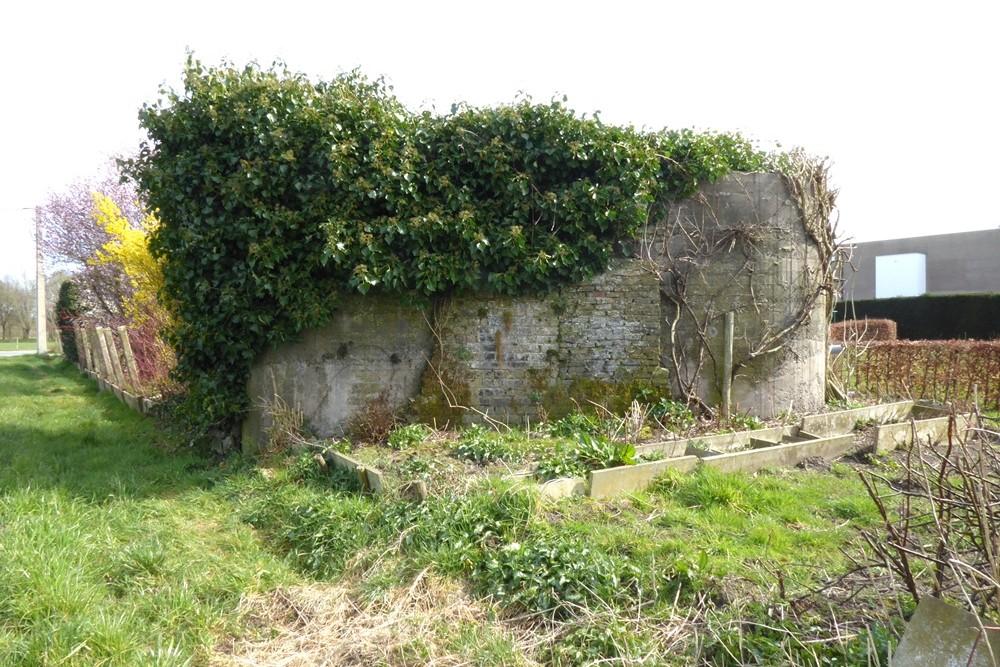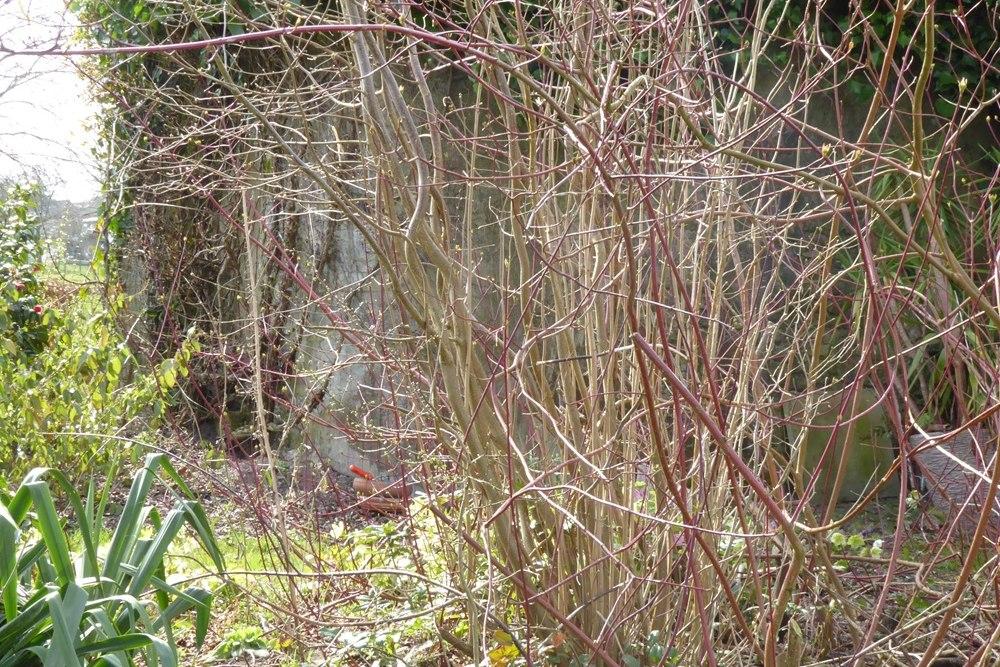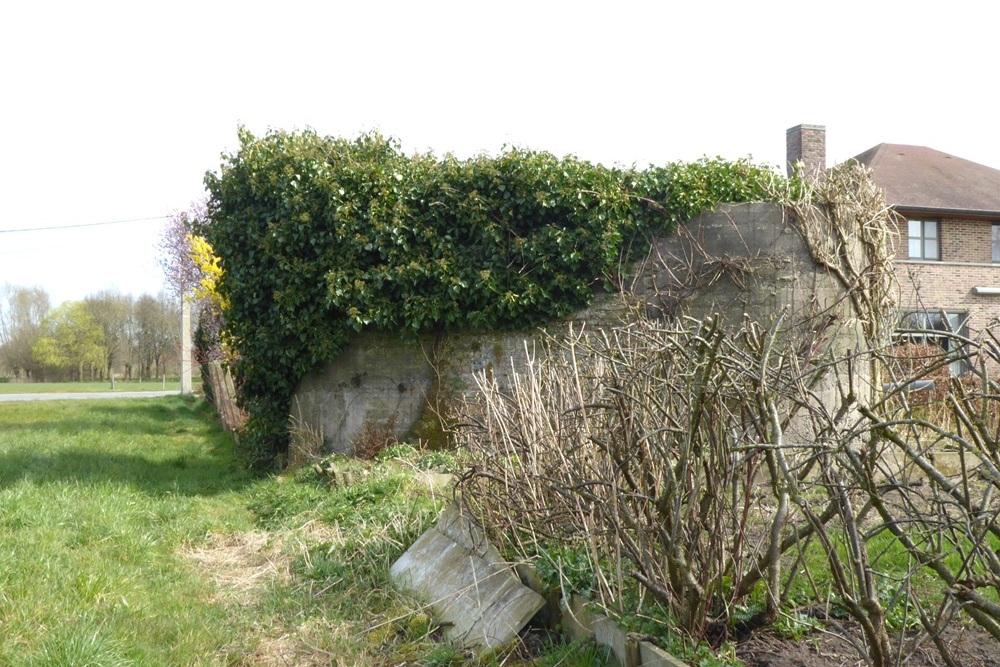Bunker Belt Bruggenhoofd Gent - Support line Bunker D6
Belgian bunker, part of the Ghent Bridgehead. This defensive position was constructed between 1934 and 1938, eight kilometres south of Ghent. Its construction was part of the fortification policy that Belgium pursued after the First World War.
The actual bridgehead consisted of two resistance nests – Betsberg and Muntekouter – and three strong points – Semmerzake, Eke and Astene.
The resistance nests and strong points were connected to each other by a curtain consisting of three defence lines.
There were 18 bunkers on the territory of Semmerzake. Three of them have been demolished, one has been dug in. Of the others, some are on private property or are overgrown.
D6 was the first support line bunker between the Semmerzake strongpoint and Muntekouter, adjacent to the Scheldt (540 m) at Semmerzake. The next of the support line was C7 (615 m).
No direct traces of the battle are visible on D6.
The bunker was completely walled in brick. It was provided with a fairly flat saddle roof covered with asbestos corrugated sheets.
The loopholes were closed with 2 hatches in galvanized sheet iron, on both sides there was a false window. It looked like an outbuilding at a farm that has since disappeared.
The bunker consists of two rooms that are connected to each other at the back and an access sash. In addition to the Maxim machine guns, the bunker was also equipped to be able to set up Hotchkiss or Colt machine guns.
The bunker is currently incorporated in the garden of a fairly recent house in the Grenadierslaan. It is partly overgrown with climbing plants. It is located about thirty meters from the street. Through the private meadow next to the house one can go a little closer.
Extensive information about this bunker belt can be found on the site Bunkergordel Bruggenhoofd Gent. It also contains photos, plans and technical data of the bunkers. A map shows the locations per municipality.
Do you have more information about this location? Inform us!
Source
- Text: TracesOfWar
- Photos: Marie-Christine Vinck
Nearby
Point of interest
- Information Board Battle of Gavere Semmerzake - Semmerzake (Gavere)
- Remains Eiserne Halle Scheldewindeke - Scheldewindeke (Oosterzele)
- Leopold barracks Gent - Gent
Monument
- Memorial Battle of Gavere - Semmerzake (Gavere)
- War Memorial Semmerzake - Semmerzake (Gavere)
- Memorial Grenadiers Eke - Eke (Nazareth-De Pinte)
Cemetery
- Belgian War Graves Semmerzake - Semmerzake (Gavere)
- Belgian War Grave Vurste - Vurste (Gavere)
- Belgian Graves Veterans Vurste - Vurste (Gavere)
Remembrance Stone
- Stumbling Stone Kortrijksesteenweg 890 - Gent
- Stumbling Stone Monterreystraat 63 - Gent
- Stumbling Stone Fortlaan 93 - Gent









